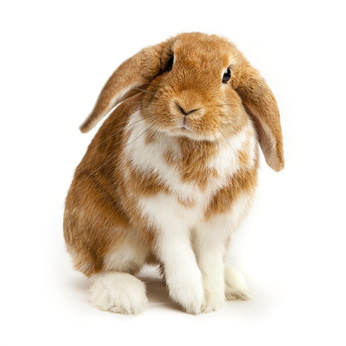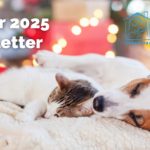Rabbit Care
 Rabbit Owner Advice Page
Rabbit Owner Advice Page
Rabbits are becoming increasingly popular pets, kept either in the house or outside. Their needs are very different from cats and dogs and it is important to recognise this to be able to look after them properly.
This page is designed to give advice on how to keep your rabbit healthy and what health problems they may develop.
Download our Rabbit Advice Sheets here or read further below
Choosing a Pet
Rabbits can make very good pets, usually living for 5-8years. However, they are not always the best choice of pet for everybody. Not all are easy to handle, some can be nervous especially if not handled from an early age. There are many breeds of rabbit which will very in the size they will grow to, for example Nederland Dwarf and Mini Lop are generally 1-1.5kg compared to French lops which can be up to 5kg. It is important to consider this if getting a young rabbit. Smaller breeds can often also be more nervous. Rabbits are very social animals with warrens in the wild containing up to 70 rabbits split into social groups of about 2-8.
Unless an owner will be spending a lot of time with the pet it is better to get rabbits in pairs or groups (see also section on neutering). Although guinea pigs are often thought to be good companions for rabbits this is not advisable.
They can be bullied by the rabbit and can develop respiratory disease from the bacteria Bordetella carried by rabbits.
Housing
Rabbits are often kept in hutches, outside or in a garage/shed. These should be as large as possible, ideally allowing the rabbit to hop 3 times from one end to the other. Some other requirements for hutches are listed below
- Raised off the ground
- Well ventilated
- Protected from drafts and extremes of weather (hot/cold)
- Separate solid fronted nesting area
- Bedded with newspaper and straw, cleaned out at least weekly
In addition to the hutch rabbits should have an exercise area to spend time in, such as a run or fenced section of garden.
When designing these bear in mind that they can jump and burrow very well. As they are prey animals it is important they have areas to hide when out in the exercise area, for example pieces of piping or cardboard boxes.
House rabbits are becoming more popular, they can be easily trained to use litter trays (wood/paper based litter) and cat flaps. They should have a secure caged area for when the owner is out.
As they naturally spend time chewing electrical wires and poisonous plants should be protected or kept out of reach.
Handling
Some rabbits can be nervous or difficult to handle. Particularly important is the need to support the hindquarters when lifting rabbits as they can easily fracture their lumbar spine if they kick out rapidly.
For particularly nervous rabbits wrapping them in a towel can help to calm them and keep them supported.
Diet
The digestive system of the rabbit is designed for the diet of a wild rabbit, which consists of grazing for most of the day. Grass provides fibre content of 25%, protein content of 15% and fat content of 2-3%, the benefits of which include :-
- Abrasive material grinds down the molar teeth at the same rate at which they grow, preventing dental disease
- Indigestible fibre stimulates gut motility and protects against gut infections/inflammation
- Eating grass takes up most of the day which prevents boredom
- Low fat content avoids obesity
When keeping pet rabbits we should try to provide a diet as close to this as possible. Rabbits with poor diet can develop problems with dental disease, diarrhoea, obesity, bladder stones and behavioural issues.
The lists below provide a guide for good feeding and also what to avoid.
Recommended diet for pet rabbits
- Grass – can be provided by time in their garden exercise area grazing or for house rabbits can plant grass in indoor planters
- Good quality grass hay (eg. Timothy grass) – make sure this is available all of the time and it can be fed in nets or racks for rabbits that eat quickly. Avoid large amounts of alfalfa hay as high calcium content can lead to bladder stones
- Limited amount high fibre commercial rabbit pellets – aim for fibre content 18-24% and protein content 15%. Pellets mean that the rabbit cannot selectively eat their favourite parts in the way they would with mixes
- Small amounts fresh vegetables and fruit – can suspend these from the top of the hutch so the rabbit takes time to eat them
- Water freely available – rabbits have a high water intake, about 10% of bodyweight. Ideally this should be from drinking bottles as bowls can excessively wet their dewlap hair and lead to skin problems. However, some rabbits will only drink from bowls
What to avoid for your rabbit
- Large amounts of commercial rabbit mixes – these are low in fibre and high in fat and carbohydrate leading to obesity, dental disease and gut problems. Rabbits eating large amounts of mix quickly feel full so wont eat hay/grass even when provided. Without time grazing and eating hay they can become bored and aggressive. Rabbits offered mixes often pick out the parts highest in fat and protein the leave the components with fibre and calcium
- Large amounts fruits high in simple sugars – can cause dental caries from high sugar content and can lead to diarrhoea. Their only place is to tempt a rabbit who is not eating or to reward when training
- Sudden changes of diet
- Frosted/mouldy food
- Lawnmower clippings
Neutering
Onset of puberty and sexual maturity is approximately 4-5m but can vary between breeds. Neutering is advisable for both males and females, as well as avoiding unwanted litters there are other advantages, see below
Females – Neutering can be done from 5-6 months of age and involves a general anaesthetic for removal of uterus and ovaries by an abdominal incision. Once they reach sexual maturity does can become aggressive towards owners and other rabbits.
Neutering is also recommended to prevent uterine cancers. These are very common in older rabbits, some studies suggest incidence of uterine adenocarcinoma is 50-80% in rabbits over the age of 3 years.
Males – Neutering can be done from 4-5months of age and usually involves sedation and local anaesthetic to remove the testicles from two incisions in the scrotum.
Males which have not been castrated can often become aggressive towards each other. It is important to be aware that males can be fertile for up to 6weeks after castration so should be separate from females for this time
While both procedures involve anaesthesia and surgery for the rabbit, which always carry a degree of risk, there are significant benefits to neutering. Although no anaesthetic or surgery can be considered ‘safe’ the understanding of requirements for rabbits has developed much in recent years allowing us to reduce the risks as much as possible.
Vaccination
There are two highly infectious and fatal diseases which rabbits can be vaccinated against. Myxomatosis causes respiratory problems, fever and swelling of the face/genitals, Haemorrhagic Viral Disease (HVD) causes sudden death or collapse from internal haemorrhage.
As they are not only spread by contact with wild rabbits but also by biting insects it is important to vaccinate both indoor and outdoor rabbits. In recent years a second strain of HVD has emerged in the UK (HVD2) causing disease even in rabbits vaccinated with traditional vaccines.
A vaccine has now been developed against this strain so we are able to cover pet rabbits for all these serious infections. The number of injections needed will depend on the vaccinations they have had previously. We can work out the best protocol for your pet when we see them.
Parasites
There are several parasites of rabbits which can be prevented by routine treatments or treated when illness develops
Fleas – Rabbits can be affected by both cat fleas and rabbit fleas. These can be treated/prevented with routine use of Imidacloprid (eg. Advantage), and treatment of the environment if there is an infestation.
DO NOT USE FIPRONIL PRODUCTS available for cats and dogs these are highly toxic to rabbits and can cause death
Mites – Some rabbits develop problems with fur mites (Cheyletiella and Listrophorus), usually if their immunity is low for another reason. If the vet is suspicious of this after examining the rabbit they can be treated with Ivermectin spot on (eg Xeno) every 2 weeks for 3 treatments. No routine prevention is necessary in unaffected animals unless they are in contact with an infected rabbit
Rabbits can also have problems with ear mites (Psoroptes cuniculi), which requires similar treatment
Worms – Gastrointestinal worm problems are not common in rabbits but can be prevented with Fenbendazole course (eg Panacur) 2-4 times yearly or monthly Ivermectin spot-on
Fly-strike – In summer months flies can lay eggs around the bottom of rabbits, which then develop into tissue eating maggots. These can rapidly develop into a serious and possibly fatal infestation requiring urgent veterinary attention.
To prevent this Cyromazine (eg Rearguard) can be applied every 8-10 weeks during the risk period. Rabbits should be checked daily for signs and soiling/matting of fur around then bottom which can attract flies should be clipped and cleaned (by the vet if appropriate)
Encephalitozoon cuniculi – This is a protozoan parasite which is widespread in the rabbit population, mostly without causing symptoms. However, some rabbits can develop significant symptoms relating to their nervous system and or urinary system, for example head tilt, inco-ordination, increased thirst and urine scalding.
Fenbendazole courses can be given 2-4 times yearly for prevention or a 28day Fenbendazole course may be prescribed by the vet if they think the rabbit has symptoms caused by the infection.
The parasite is particularly significant as it can be transmitted to people and cause problems particularly in children, the elderly or other people with weakened immune systems. Transmission is via urine so can be prevented by good hygiene when handling rabbits and cleaning
Common Health Problems
Generally most health problems in rabbits can be prevented with good diet and husbandry and appropriate preventative treatments. However, there are some illnesses we see relatively frequently in rabbits.
Dental Disease
Rabbits can develop problems with both their incisors (front teeth) and their molars (back teeth), usually related to the fact that they are constantly growing
Incisor problems – rabbits have a pair of upper and lower incisors (plus a small vestigial second pair of upper incisors) which are used for chopping fibres before they enter the mouth and for grooming. They should meet in the middle and wear down meaning that although they are constantly growing the tooth does not actually get any longer.
Problems usually arise if the upper and lower incisors do not meet and can then grow excessively without being worn down. This can happen as a result of trauma or commonly in dwarf breeds because of a failure for their jaws to develop in correct alignment.
Overgrown incisors can stop the rabbit and grooming and can dig into other areas of the gum causing pain and discomfort. Treatment can involve the vet using a high speed burr to remove the excessive length of the tooth but the constant growth means rabbits need this doing very frequently.
Most rabbits tolerate this without anaesthetic. In rabbits with persistent problems the incisors can be surgically removed under general anaesthetic.
Molar Problems – rabbits 6 upper cheek teeth and 5 lower cheek teeth on either side, some of these are premolars and some are molars but they all act in the same way to provide upper and lower grinding surfaces for fibre in the rabbit’s diet. Problems in domestic rabbits arise when the rate at which the teeth wear down is not as fast as the rate at which they grow.
As the upper and lower teeth meet in the middle there is limited room here for the extra length of tooth, as a result the roots get pushed further back into the jaws. This creates swellings which can be felt on the lower jaw and can put pressure on the eye socket and tear duct in the upper jaw.
As the problem progresses the teeth become more angled in the mouth leaving some areas of the surface that do not get worn down. This creates spikes or spurs, usually on the tongue side of the lower teeth and the cheek side of the upper teeth, leading to pain and damage to the cheek and tongue. Unlike the incisors the cheek teeth are much harder to examine for both owners and vets.
Signs of problems may include salivation, reduced appetite, dropping of food, long fibres in droppings, swelling on lower jaw, discharge from the eyes and biting or grumpy behaviour. If you are concerned about your rabbit the vet can look in the mouth with an otoscope (usually used to look in a dog/cat’s ears!) or often will need to give them an anaesthetic to get a detailed look at the teeth.
Although the spurs can be rasped and the length of teeth reduced a little once problems develop most rabbits will need frequent dental treatment and sometime referral for cheek teeth to be removed. Trying to prevent problems by high fibre diet is a much better option.
Abscesses
Abscesses are a very common reason for swellings found on rabbits. The cause of abscesses in rabbits is often not found, although some can be focussed around infected tooth roots in rabbits with dental problems. Irrespective of the cause they present a real challenge to vets as rabbit abscess material (pus) is very thick and does not drain away easily or allow antibiotics to penetrate.
Most abscesses have a thick capsule surrounding them. Ideally if possible (depending on size and location) we try to remove the whole abscess intact with its capsule as this is the best way to stop them recurring. If this is not possible we usually have to lance the abscess and flush it out and then give antibiotics to try and prevent recurrence but frequently they can recur.
Cystitis
Rabbits can have a red pigment in their urine called porphoryn, which can easily be mistaken for blood. However rabbits can also develop cystitis, usually as well as blood in the urine you will see increased amount or frequency of passing urine.
This can be due to infections or sometimes due to accumulation of calcium crystals in the bladder in rabbits on high calcium diets. If the vet suspects bladder problems your rabbit may need a bladder scan or x-ray to investigate further
Respiratory Infections
Respiratory infections in rabbits are usually caused by bacteria such as Pasteurella. These are carried in the normal respiratory system but can cause disease at times of stress or lowered immunity.
Typically seen as a discharge from the nose and eyes but can progress to pneumonia in severe infections. Treatment of these infections involves nursing and antibiotics
When trying to assess whether your rabbit is unwell it is always important to consider their behaviour as well as other obvious external signs. As a prey species in the wild showing signs of weakness is not beneficial so rabbits do not often show dramatic signs of illness until they are very sick.
The first signs you may notice as an owner may simply be quiet behaviour, reduced appetite, reduced faeces or if they are in discomfort they may sit in a hunched up way. If you are concerned about your rabbit and are unsure if they are unwell it is better for them to be checked by the vet rather than wait until they deteriorate.
As with cats and dogs pet insurance is available for rabbits. There are a wide range of treatments and investigations available for rabbits including referral to specialists if necessary and insurance can make decisions about these treatments a little bit easier.





